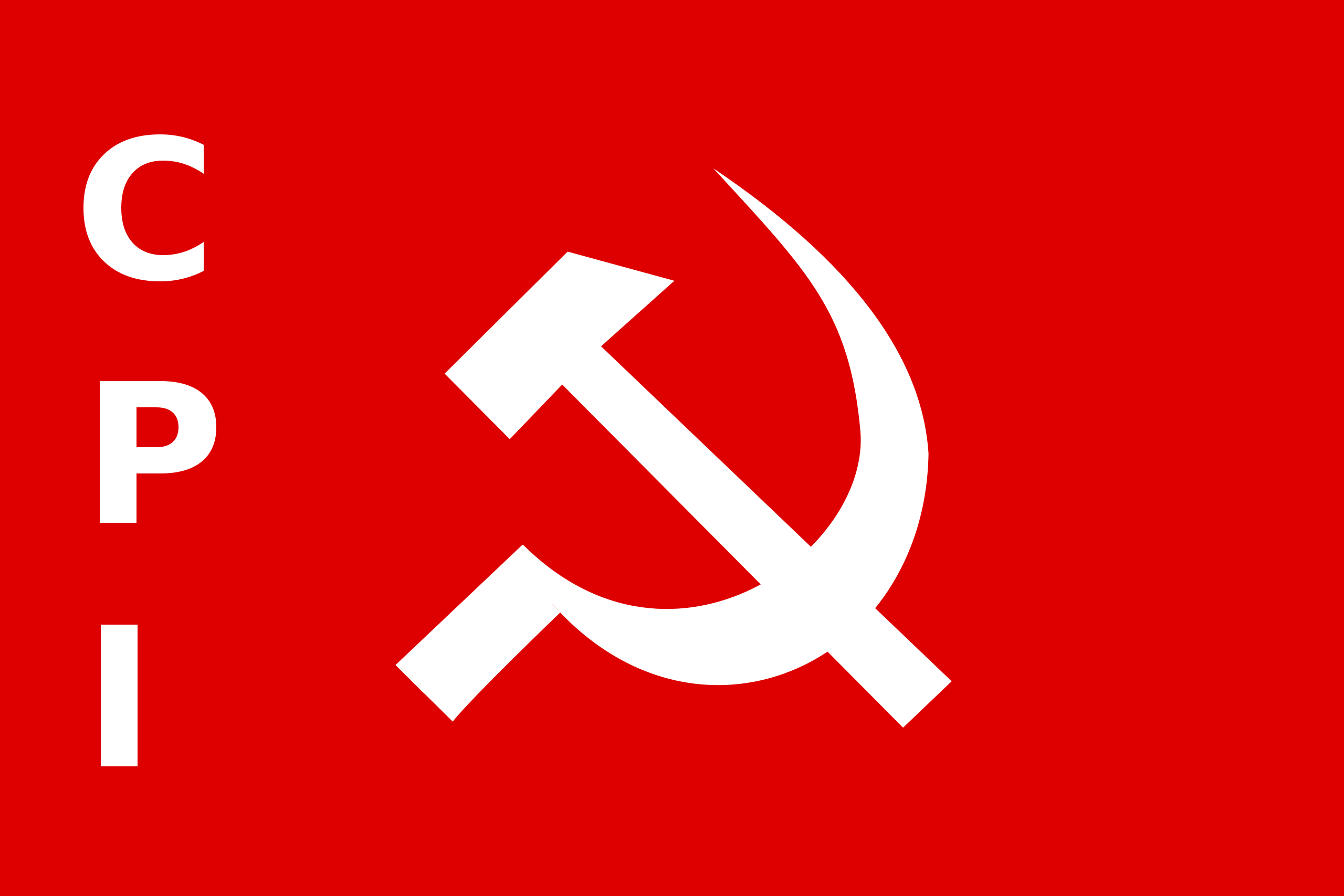More languages
More actions
Communist Party of India भारतीय कम्युनिस्ट पार्टी | |
|---|---|
 | |
| General Secretary | D. Raja |
| Founded | 17 October 1920 |
| Youth wing | All India Youth Federation |
| Website | |
| https://www.communistparty.in/ | |
| Part of a series on |
| Communist parties |
|---|
The Communist Party of India (CPI) is a Marxist-Leninist political party and the oldest communist party in India.
History
Foundation
The Communist Party of India was founded on 17 October 1920 in Tashkent, then the capital of the Turkestan ASSR of the Russian SFSR. Only seven people were present at the founding conference. In 1921, a group of communists returning to India from Soviet Russia was arrested in Peshawar. In 1922, the CPI began a publication called the Vanguard of Indian Independence from Berlin. This newspaper was banned by the British and replaced by Mass of India in 1925. In 1923, the first May Day celebration in India was organized by Singaravelu Chettiar.
In December 1925, a meeting of communist groups was held in Kanpur with about 500 delegates. At the congress, Chettiar was elected president and S. V. Ghate and J. P. Bagerhatta were elected general secretaries. Another meeting was held in Mumbai in 1927 and a new constitution was adopted. In 1929, the party congress adopted a resolution for the complete independence of India.[1]
Suppression
On 20 March 1929, 31 communist and union leaders from across India were arrested by the British. The group included 13 CPI members as well as members of other communist parties, including two British communists. Their trial in Meerut would last until 1933, when eleven of them were sentenced to prison.
In April 1930, revolutionaries raided an armoury in Chittagong. They were considered terrorists by the British and Bhagat Singh and his associates were hanged. Over 400 more were imprisoned on the Andaman Islands, many of whom joined the CPI. In July 1934, the party was banned but it continued its activities. After the party was banned, the Congress Socialist Party was founded with Jayaprakash Narayan as its first general secretary. In 1935, delegates from the CPI participated in the seventh congress of the Comintern.[1]
Second World War
The CPI initially opposed Indian involvement in the Second World War. The British arrested most of the party leadership by 1941. After Nazi Germany invaded the Soviet Union, the CPI supported Soviet resistance against the Nazis and demanded the destruction of fascism. The British lifted the ban on the CPI in 1942.[2]
Postwar period
From 1946 to 1950, the CPI led a peasant struggle against feudal landlords in Bengal. At the same time, it rebelled against the Nizam who ruled the princely state of Telangana as a comprador. At the peak of the struggle, the CPI controlled 3,000 villages with a total population of over three million. This struggle led to land redistribution, higher wages, and the abolition of forced labor. In 1951, the Indian army put down the rebellion, killing 4,000 people.[2]
Split
In 1964, the Communist Party of India (Marxist) split from the CPI. The CPI supported working with the post-independence government of Jawaharlal Nehru, which used economic planning and had an anti-imperialist foreign policy, while the CPI(M) refused to cooperate with them. In 1969, other communists formed the CPI(ML) which advocated for armed struggle against capitalism.[2]
References
- ↑ 1.0 1.1 Brinda Karat (2020). 100 Years of the Communist Party: 'Formation of CPI, 1920' (pp. 5–30). [PDF]
- ↑ 2.0 2.1 2.2 "One Hundred Years of the Communist Movement in India" (2020-09-01). Tricontinental. Archived from the original on 2022-03-31. Retrieved 2022-11-12.
